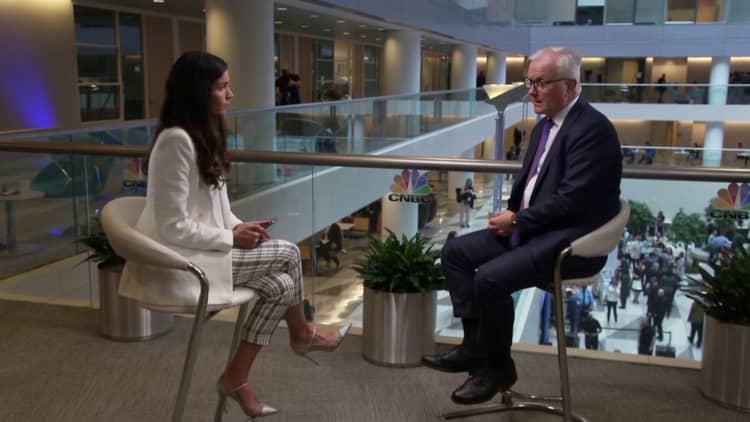Christine Lagarde, president of the European Central Bank (ECB).
Bloomberg | Bloomberg | Getty Images
Goldman Sachs changed its expectations for European Central Bank policy, arguing that recent data, comments from board members, and fewer concerns over the banking sector has allowed for further hawkish action.
The investment bank had lowered its expectations for the ECB’s terminal policy rate to 3.5% in the wake of the collapse of Silicon Valley Bank earlier this year. The event sparked concerns that central banks were moving at too fast a pace and needed to take a break from increasing rates.
However, “banking tensions have receded in recent weeks as the risk of an outright U.S. banking crisis has declined sharply and European bank stock/wholesale funding measures have retraced a large proportion of their large drop in early March,” Goldman Sachs analysts said in a research note Monday.
The bank now believes it will stop hiking (the so-called terminal rate) at 3.75%. The ECB’s benchmark rate has been at 3% since its latest rate decision in March.
In addition, Goldman Sachs said that inflation data is still “very strong,” fueling the argument for more rate hikes. Headline inflation across the euro zone dropped to 6.9% in March, according to preliminary data. In February, the headline rate stood at 8.5%.
Despite this drop, core inflation — which excludes volatile energy, food, alcohol and tobacco prices — rose slightly from the previous month, highlighting the persistence of high prices in the region’s economy.

Olli Rehn, the governor of the Bank of Finland and a member of the ECB’s board, said that “inflation is still by far too high.” Speaking to CNBC last week at the IMF Spring meetings, he added that the central bank must “carry on and act consistently.”
At the March meeting, the ECB did not provide any guidance for upcoming rate decisions, saying these will be data-dependent and happen on a meeting-by-meeting basis.
However, ECB watchers expect a rate increase of 25 or 50 basis points when the Governing Council meets next month.
“We view the choice between 25 basis points and 50 basis points in May as a close call given receding banking risks, growth resilience and ongoing strength in underlying inflation,” Goldman Sachs said.
However, the investment bank is, for the moment, working under the assumption that the ECB will push rates higher by 25 basis points at the May, June and July meeting.
“Reasons for a more gradual speed of tightening from here include that the recent banking stresses are likely to leave some mark on bank lending, we expect some cooling in sequential core inflation in coming months, and the uncertainty around the global outlook has risen,” the analysts said.



